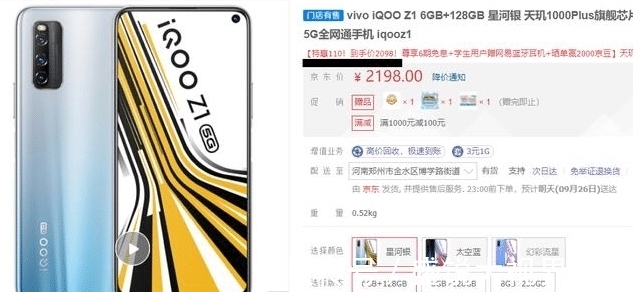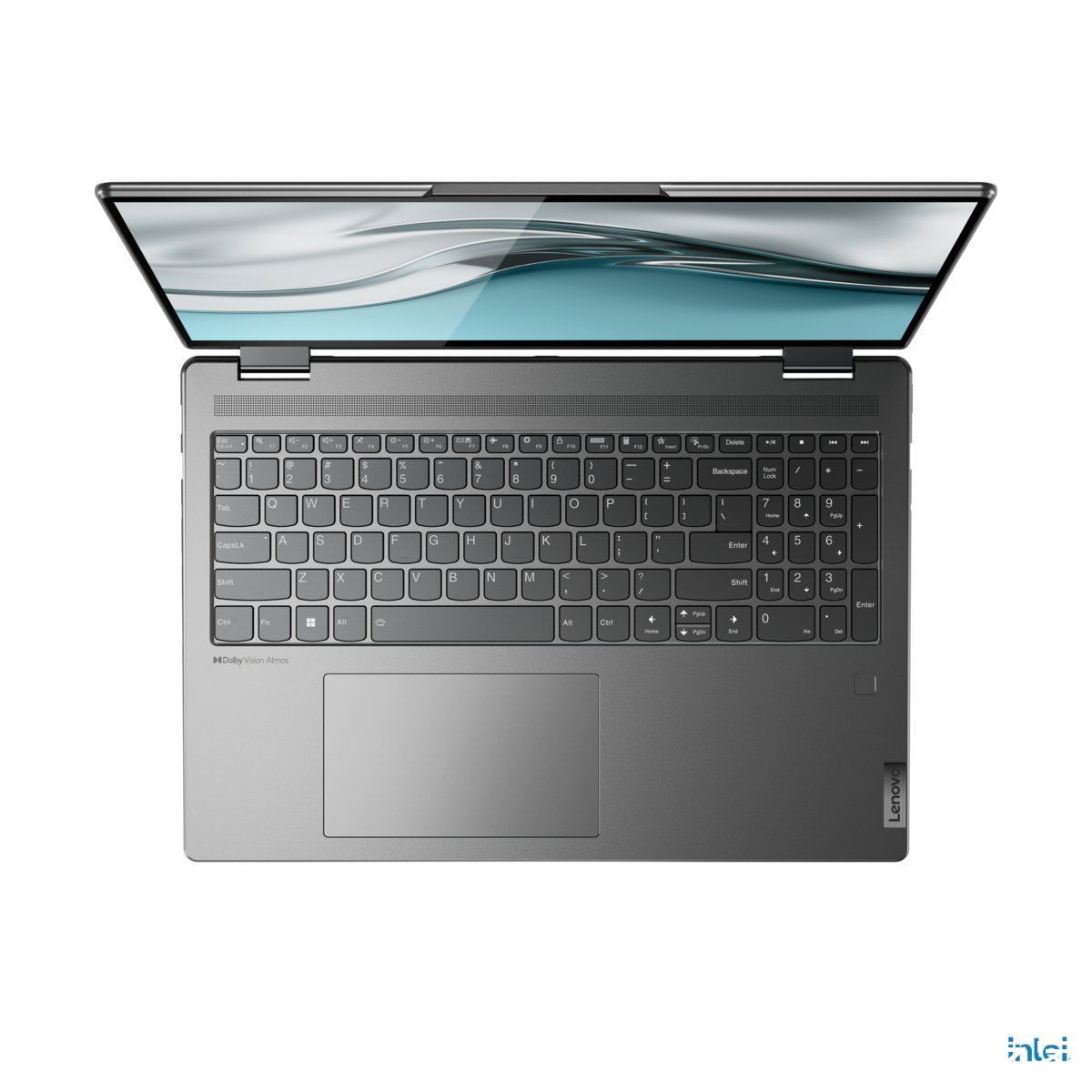从来好事天生俭,自古瓜儿苦后甜。这篇文章主要讲述Android View的绘制流程三部曲 —— Measure相关的知识,希望能为你提供帮助。
在刚开始学习java的时候,我看的是Mars老师的视频。Mars老师说过的一句话让我印象很深刻:要有一颗面向对象的心。
如果我们用面向对象的思维方式来思考,就会觉的View的绘制机制是很合理,很科学的。我们要在一张纸上画一幅画,首先要测量一下这幅画有多大吧,然后确定在这张纸的哪个地方画会显得比较美观,最后才是用画笔工具将画绘制在纸上。
在android中也是一样的。View的绘制流程主要是指measure,layout,draw这三步,即测量,布局,绘制。首先是要测量View的宽高,然后布局确定在父容器中的位置坐标,最后才是绘制显示出来。
View的绘制流程从ViewRootImpl的performTraversals方法开始,在performTraversals方法中会调用performMeasure、performLayout、performDraw三个方法来遍历完成整棵视图树的绘制。
那这篇博客就一起来探索View的绘制流程中的第一步,measure。
MeasureSpecperformMeasure方法是这样被调用的,
performMeasure(childWidthMeasureSpec, childHeightMeasureSpec);
接收了两个参数,很好奇这两个参数是什么。看名字是“子View宽测量说明书”和“子View高测量说明书”?应该先来了解一下MeasureSpec。
MeasureSpec是一个32位的int值,高2位是specMode记录的是测量模式,低30位是specSize记录的是测量大小。
specMode有三种类型:
EXACTLY : 精确值模式,表示父视图希望子视图的大小应该是由specSize的值来决定的,这个时候View的最终大小就是specSize所记录的大小。对应于LayoutParams中的 match_parent和具体数值的形式。比如 android:layout_width=”match_parent”,android:layout_width=”50dp”
AT_MOST : 最大值模式,表示父容器指定了一个可用大小specSize,子视图最多只能是specSize中指定的大小,不能大于这个值。对应于LayoutParams中的 wrap_content的形式。
UNSPECIFIED :父容器不对View有任何限制,View想多大就多大,一般不会用到
MeasureSpec到底是用来干嘛的?
系统是通过View的MeasureSpec来确定View的测量宽高的
MeasureSpec是怎么来的?
对于普通的View来说,其MeasureSpec由父容器的MeasureSpec和自身的LayoutParams共同确定。对于顶级View(DecorView),其MeasureSpec由窗口的尺寸和其自身的LayoutParams共同确定。
一个View是有两个MeasureSpec的,一个用于确定测量的宽,一个用于确定测量的高。
我们回到performMeasure方法,来看看参数childWidthMeasureSpec和childHeightMeasureSpec,这两个MeasureSpec是顶级View的,它们由窗口的尺寸和其自身的LayoutParams共同确定。那它们又是怎么产生的?接下来就是揭晓谜底时候。
在ViewRootImpl的measureHierarchy方法中,有两行代码是这样的
childWidthMeasureSpec = getRootMeasureSpec(desiredWindowWidth, lp.width);
childHeightMeasureSpec = getRootMeasureSpec(desiredWindowHeight, lp.height);
getRootMeasureSpec方法获取到根View(DecorView)的MeasureSpec。哈哈找到了。然后赋值给childWidthMeasureSpec和childHeightMeasureSpec。desiredWindowWidth和desiredWindowHeight是屏幕的尺寸。lp.width 和lp.height都是MATCH_PARENT。
那么探探getRootMeasureSpec方法,如下:
private static int getRootMeasureSpec(int windowSize, int rootDimension) {
int measureSpec;
switch (rootDimension) {case ViewGroup.LayoutParams.MATCH_PARENT:
// Window can‘t resize. Force root view to be windowSize.
measureSpec = MeasureSpec.makeMeasureSpec(windowSize, MeasureSpec.EXACTLY);
break;
case ViewGroup.LayoutParams.WRAP_CONTENT:
// Window can resize. Set max size for root view.
measureSpec = MeasureSpec.makeMeasureSpec(windowSize, MeasureSpec.AT_MOST);
break;
default:
// Window wants to be an exact size. Force root view to be that size.
measureSpec = MeasureSpec.makeMeasureSpec(rootDimension, MeasureSpec.EXACTLY);
break;
}
return measureSpec;
}
会转到MeasureSpec的makeMeasureSpec方法,而makeMeasureSpec方法就是将SpecSize和SpecMode包装成32位的int值。在这里,SpecSize是windowSize,即屏幕的尺寸,SpecMode是EXACTLY(精确值模式)。那makeMeasureSpec方法是怎么组装MeasureSpec的呢?如下:
public static int makeMeasureSpec(@IntRange(from = 0, to = (1 <
<
MeasureSpec.MODE_SHIFT) - 1) int size,
@MeasureSpecMode int mode) {
if (sUseBrokenMakeMeasureSpec) {
return size + mode;
} else {
return (size &
~MODE_MASK) | (mode &
MODE_MASK);
}
}
这样,根View的MeasureSpec就诞生了。它将参与构成子元素的MeasureSpec。
【Android View的绘制流程三部曲 —— Measure】而对于普通的View,其MeasureSpec由父容器的MeasureSpec和自身的LayoutParams共同构成。我们知道刚才getRootMeasureSpec方法获取到的是顶级View的MeasureSpec,顶级View本身就是父容器。
那现在看看ViewGroup的measureChild方法,这个方法是用来测量子View的。如下:
protected void measureChild(View child, int parentWidthMeasureSpec,
int parentHeightMeasureSpec) {
final LayoutParams lp = child.getLayoutParams();
final int childWidthMeasureSpec = getChildMeasureSpec(parentWidthMeasureSpec,
mPaddingLeft + mPaddingRight, lp.width);
final int childHeightMeasureSpec = getChildMeasureSpec(parentHeightMeasureSpec,
mPaddingTop + mPaddingBottom, lp.height);
child.measure(childWidthMeasureSpec, childHeightMeasureSpec);
}
首先是调用子元素的getLayoutParams方法获取到子元素的LayoutParams,之后调用了getChildMeasureSpec方法来获取到子元素的MeasureSpec,可以看到传入了父元素的MeasureSpec(parentWidthMeasureSpec、parentHeightMeasureSpec)。
getChildMeasureSpec方法很重要,能让我们了解子元素MeasureSpec的产生过程,如下:
public static int getChildMeasureSpec(int spec, int padding, int childDimension) {
int specMode = MeasureSpec.getMode(spec);
int specSize = MeasureSpec.getSize(spec);
int size = Math.max(0, specSize - padding);
int resultSize = 0;
int resultMode = 0;
switch (specMode) {
// Parent has imposed an exact size on us
case MeasureSpec.EXACTLY:
if (childDimension >
= 0) {
resultSize = childDimension;
resultMode = MeasureSpec.EXACTLY;
} else if (childDimension == LayoutParams.MATCH_PARENT) {
// Child wants to be our size. So be it.
resultSize = size;
resultMode = MeasureSpec.EXACTLY;
} else if (childDimension == LayoutParams.WRAP_CONTENT) {
// Child wants to determine its own size. It can‘t be
// bigger than us.
resultSize = size;
resultMode = MeasureSpec.AT_MOST;
}
break;
// Parent has imposed a maximum size on us
case MeasureSpec.AT_MOST:
if (childDimension >
= 0) {
// Child wants a specific size... so be it
resultSize = childDimension;
resultMode = MeasureSpec.EXACTLY;
} else if (childDimension == LayoutParams.MATCH_PARENT) {
// Child wants to be our size, but our size is not fixed.
// Constrain child to not be bigger than us.
resultSize = size;
resultMode = MeasureSpec.AT_MOST;
} else if (childDimension == LayoutParams.WRAP_CONTENT) {
// Child wants to determine its own size. It can‘t be
// bigger than us.
resultSize = size;
resultMode = MeasureSpec.AT_MOST;
}
break;
// Parent asked to see how big we want to be
case MeasureSpec.UNSPECIFIED:
if (childDimension >
= 0) {
// Child wants a specific size... let him have it
resultSize = childDimension;
resultMode = MeasureSpec.EXACTLY;
} else if (childDimension == LayoutParams.MATCH_PARENT) {
// Child wants to be our size... find out how big it should
// be
resultSize = View.sUseZeroUnspecifiedMeasureSpec ? 0 : size;
resultMode = MeasureSpec.UNSPECIFIED;
} else if (childDimension == LayoutParams.WRAP_CONTENT) {
// Child wants to determine its own size.... find out how
// big it should be
resultSize = View.sUseZeroUnspecifiedMeasureSpec ? 0 : size;
resultMode = MeasureSpec.UNSPECIFIED;
}
break;
}
//noinspection ResourceType
return MeasureSpec.makeMeasureSpec(resultSize, resultMode);
}
如果父容器的specMode是EXACTLY,子元素的大小是精确的大小(设置了比如android:layout_width=”50dp”),那么子元素的specSize是childDimension(如50dp) ,specMode也是EXACTLY。其他的分支都是差不多的。
这个方法代码虽然长长的,但逻辑并不复杂,就是根据父容器的MeasureSpec和子元素的LayoutParams来组装子元素的MeasureSpec。所以说普通View的MeasureSpec由父容器的MeasureSpec和自身的LayoutParams共同决定。
MeasureSpec就那么多知识点,其实我觉的View的绘制过程中,measure过程之所以是复杂的,就是因为MeasureSpec的构成受到父容器MeasureSpec和自身LayoutParams的影响,分了多种情况。好多要记的。
有了MeasureSpec后,真正的测量过程,其实就是根据MeasureSpec的测量模式来确定测量大小。就是这样。
那么现在我们已经搞定了MeasureSpec,之后回到performMeasure方法,这里传入的是顶级View(DecorView)的MeasureSpec。那么我们就跟进看看到底View的测量过程是怎样的。
View的测量performMeasure方法源码如下:
private void performMeasure(int childWidthMeasureSpec, int childHeightMeasureSpec) {
Trace.traceBegin(Trace.TRACE_TAG_VIEW, "measure");
try {
mView.measure(childWidthMeasureSpec, childHeightMeasureSpec);
} finally {
Trace.traceEnd(Trace.TRACE_TAG_VIEW);
}
}
转到了View的measure方法,如下:
public final void measure(int widthMeasureSpec, int heightMeasureSpec) {//代码省略final boolean forceLayout = (mPrivateFlags &
PFLAG_FORCE_LAYOUT) == PFLAG_FORCE_LAYOUT;
//代码省略
if (forceLayout || needsLayout) {
// first clears the measured dimension flag
mPrivateFlags &
= ~PFLAG_MEASURED_DIMENSION_SET;
resolveRtlPropertiesIfNeeded();
int cacheIndex = forceLayout ? -1 : mMeasureCache.indexOfKey(key);
if (cacheIndex <
0 || sIgnoreMeasureCache) {
// measure ourselves, this should set the measured dimension flag back
onMeasure(widthMeasureSpec, heightMeasureSpec);
mPrivateFlags3 &
= ~PFLAG3_MEASURE_NEEDED_BEFORE_LAYOUT;
} //代码省略mOldWidthMeasureSpec = widthMeasureSpec;
mOldHeightMeasureSpec = heightMeasureSpec;
mMeasureCache.put(key, ((long) mMeasuredWidth) <
<
32 |
(long) mMeasuredHeight &
0xffffffffL);
// suppress sign extension
}
可以看到View的measure方法是带final的,不允许子类重写。
经过一系列的处理,核心过程会转到onMeasure方法真正去测量,而这个onMeasure方法一般是需要重写,比如DecorView重写了View的onMeasure方法,TextView也是。
但是View也定义了onMeasure方法的默认实现,那就跟进onMeasure方法探探,
protected void onMeasure(int widthMeasureSpec, int heightMeasureSpec) {
setMeasuredDimension(getDefaultSize(getSuggestedMinimumWidth(), widthMeasureSpec),
getDefaultSize(getSuggestedMinimumHeight(), heightMeasureSpec));
}
调用了setMeasuredDimension将测量的宽高设置进去,好像很简单的说。如果我们要重写onMeasure方法,去测量宽高,最后也要调用setMeasuredDimension将测量的宽高设置进去。好,接着继续
getDefaultSize方法用于获取测量宽高,应该就是这里完成的转换吧,应该就是根据测量模式来得到测量的大小吧。
public static int getDefaultSize(int size, int measureSpec) {
int result = size;
int specMode = MeasureSpec.getMode(measureSpec);
int specSize = MeasureSpec.getSize(measureSpec);
switch (specMode) {
case MeasureSpec.UNSPECIFIED:
result = size;
break;
case MeasureSpec.AT_MOST:
case MeasureSpec.EXACTLY:
result = specSize;
break;
}
return result;
}
其实内部逻辑是很简单的,从measureSpec中取出specMode和specSize,然后就是AT_MOST和EXACTLY的情况下,都返回specSize,这个specSize就是测量的值了。
以上就是View的测量过程。
ViewGroup的测量那么接下来是ViewGroup的测量过程,ViewGroup中是没有重写onMeasure方法的,这也是很合理的。怎么能定义出一个符合很多种ViewGroup的onMeasure方法呢?很显然LinearLayout和RelativeLayout的onMeasure方法实现是不一样的。一个是线性布局,一个是相对布局。
ViewGroup除了完成自身的测量,还会遍历子元素,如此循环完成整棵视图树的测量过程。在ViewGroup中定义了一个measureChildren方法去遍历子元素,如下:
protected void measureChildren(int widthMeasureSpec, int heightMeasureSpec) {
final int size = mChildrenCount;
final View[] children = mChildren;
for (int i = 0;
i <
size;
++i) {
final View child = children[i];
if ((child.mViewFlags &
VISIBILITY_MASK) != GONE) {
measureChild(child, widthMeasureSpec, heightMeasureSpec);
}
}
}会转到measureChild方法中去测量子元素。
protected void measureChild(View child, int parentWidthMeasureSpec,
int parentHeightMeasureSpec) {
final LayoutParams lp = child.getLayoutParams();
final int childWidthMeasureSpec = getChildMeasureSpec(parentWidthMeasureSpec,
mPaddingLeft + mPaddingRight, lp.width);
final int childHeightMeasureSpec = getChildMeasureSpec(parentHeightMeasureSpec,
mPaddingTop + mPaddingBottom, lp.height);
child.measure(childWidthMeasureSpec, childHeightMeasureSpec);
}
就这样,ViewGroup将measure过程传递到了子元素。如此反复完成整棵视图树的绘制。
以上就是ViewGroup的测量过程
总结我觉的学习View的绘制,可以看看一些系统的View的源码,比如LinearLayout的,TextView的,TextView的比较难,可以挑个简单点的。
来举个例子梳理一下,activity_main.xml文件如下所示:
<
LinearLayout
xmlns:android="http://schemas.android.com/apk/res/android"
android:layout_width="match_parent"
android:layout_height="match_parent"
android:orientation="horizontal"
>
<
TextView
android:layout_width="wrap_content"
android:layout_height="wrap_content"
android:text="helloworld"
/>
<
/LinearLayout>
View的绘制流程从ViewRootImpl的performTraversals方法开始,在performTraversals方法中会调用performMeasure方法。而在performMeasure中会调用DecorView的measure方法,这样整个视图树的测量也就开始了。
之后DecorView会调用它重写的onMeasure方法,在DecorView的onMeasure方法中,又会调用其父类FrameLayout的onMeasure方法,在FrameLayout的onMeasure方法中,才将measure过程传递到子元素,即调用了子元素的measure方法。这个时候就到了我们的activity_main.xml文件对应的ContentView了。这就是ViewGroup的measure传递过程。
上面贴出了View的measure方法,我们知道了measure方法是不允许子类重写的,但它很重要。measure方法是传递的入口,比如父元素传递measure过程给子元素一般都是这样的,
child.measure(childWidthMeasureSpec, childHeightMeasureSpec)measure方法传入子元素的MeasureSpec,而这个MeasureSpec是通过父元素的MeasureSpec和子元素自身LayoutParams共同决定的,详细过程会看上面的measureChild方法。
然后在子元素的measure中会调用onMeasure方法去真正测量View。onMeasure方法通常都要重写。根据MeasureSpec来最终确定出View的测量宽高。
呼!真的要去看下系统控件源码,或者是去看下大神们写的自定义View,能帮助我们梳理View的绘制的知识。
比如郭神写过一篇文章介绍Scroller,还介绍了简易版ViewPager的实现,这个自定义的ViewPager的方法是这样重写onMeasure方法的:
@Override
protected void onMeasure(int widthMeasureSpec, int heightMeasureSpec) {
super.onMeasure(widthMeasureSpec, heightMeasureSpec);
int childCount = getChildCount();
for (int i = 0;
i <
childCount;
i++) {
View childView = getChildAt(i);
// 为ScrollerLayout中的每一个子控件测量大小
measureChild(childView, widthMeasureSpec, heightMeasureSpec);
}
}
学习的时候就可以思考,为什么郭大侠会这样写?第一行super.onMeasure是测量自身(View的onMeasure是有用的!),然后是遍历子元素,调用measureChild方法来测量子元素,完毕!这也验证了ViewGroup除了测量自身,还会遍历测量子元素。
这些都是我学习View的绘制,自定义View的方法。
推荐阅读
- Android Spans介绍(转)
- Android4.0的Alertdialog对话框,设置点击其他位置不消失
- android WindowManager解析与骗取QQ密码案例分析
- Android-armebi-v7aarm64-v8aarmebi的坑
- Android 摇一摇功能的注意事项
- 使用LogPhoneUtil工具类在Android手机保存APP运行日志
- unity代码加密for Android,mono编译
- Android 悬浮窗各机型各系统适配大全
- ER图的最小化介绍和详细指南













